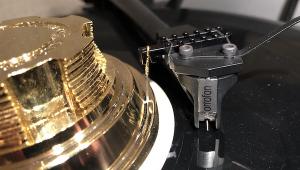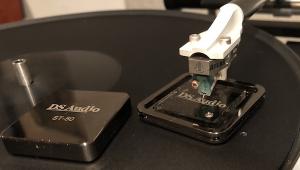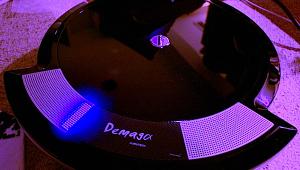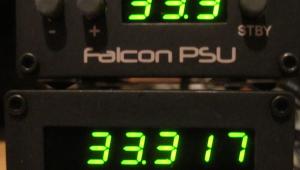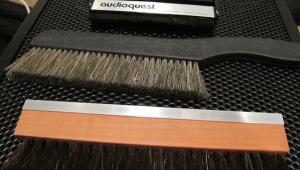FLUX HI FI Electronic Stylus Cleaner
The older ones incorporated a high frequency oscillator that ran at a very high speed—higher than any musical frequency a cartridge's suspension and motor would ever "see" playing back a record. It seems obvious now that such a high the frequency oscillation might damage the delicate cartridge suspension system, especially back then when high compliance MM cartridges ruled the grooves.
Erring on the side of caution made more sense so the once popular devices seemed to suddenly disappear, replaced by manual tightly packed stiff-bristled brushes and various formulation of "mounds of goo" like the Onzow Zerodust as well as some "home brew" concoctions.
The new FLUX HI FI Electronic Stylus Cleaner marketed in America by Dynavector cartridge importer TOFFCO claims to have solved the older units' drawback by incorporating a lower frequency oscillator. I first saw this $150 unit today at the Atlanta HiFi Buys store grand opening.
I asked if I could take it for a test spin on the store's Lyra Atlas and I got the go ahead. The FLUX is a relatively lightweight curvaceous plastic affair powered by two AAA batteries. You are instructed to apply a drop of supplied fluid to the tightly packed fiber brush, gently lower the stylus onto the brush and push the "on" button for approximately fifteen seconds after which the stylus should be clean.
You are cautioned to be sure that the platter is not free to rotate. Before actually lowering the stylus of the $10,000 Lyra Atlas onto the brush pad, I placed the unit on the Brinkmann Balance's hard platter surface and activated the device with a push of the top-mounted button. While the bottom surface of the lightweight unit has attached to it a pair of fiber pads intended to grip a felt mat, these pads were not effective on the Balance's hard, smooth platter surface so upon turn-on, the FLUX unit was free to "dance".
I carefully held it in place to stop the movement and noted that the sound it produced was considerably lower in frequency than the older ones I'd been accustomed to using. This indicated that the FLUX did indeed oscillate at a lower, safer frequency. I was told by a store employee that the importer claims to have used it safely many times before marketing it—which makes sense given that TOFFCO also imports costly cartridges!
I carefully put a drop of supplied fluid onto the vibrating pad and lowered the stylus for the recommended fifteen seconds while carefully steadying the housing. An LED illuminated upon turn-on, which made easier watching the "action".
I'd bought a used record and cleaned it but once was not enough because a "gummy" had attached itself to the stylus. After fifteen seconds I lifted the arm and the stylus appeared to be completely clean and free of the "gummy". A close inspection revealed that it was.
The FLUX HiFi electronic stylus cleaner works as promised and seems to vibrate at a low enough frequency to be perfectly safe. Though I used it only once I can confidently recommend it, though if you have a hard, smooth platter you should modify the unit with some kind of stickier pad on bottom. In fact, considering the $150 price, the manufacturer should do this in its next product run.





